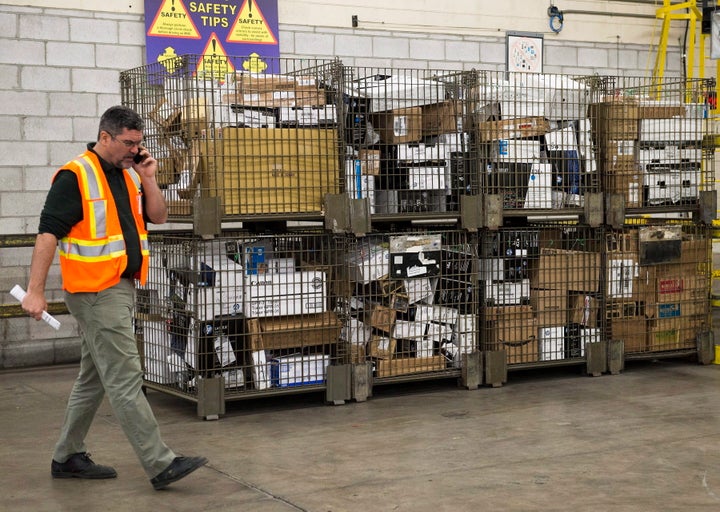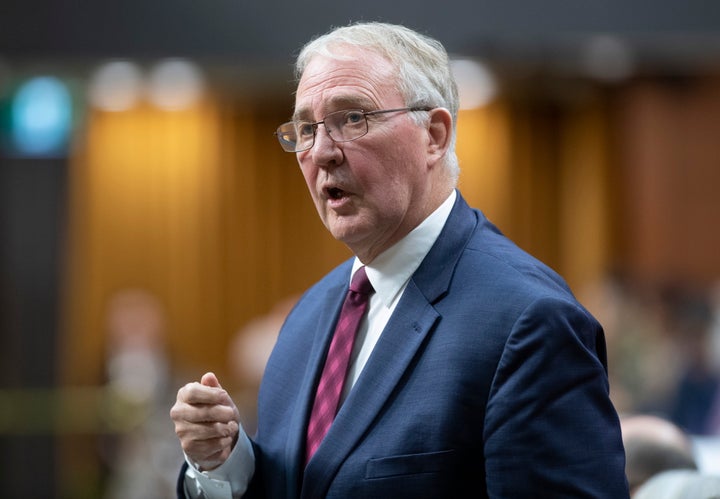
OTTAWA — Canadian border officials seized enough fentanyl to avert nearly 20 million potential overdoses between May 2016 and June 2018, according to documents obtained through an access to information request.
Agents made 270 interceptions during this two-year period, the Canada Border Service Agency (CBSA) briefing notes show. It resulted in approximately 39.4 kilograms of fentanyl and fentanyl analogues seized, a group of synthetic opioids that includes carfentanil.
The Royal Canadian Mounted Police state two milligrams of pure fentanyl — “the size of about two grains of salt” — can be a lethal dose for most adults. A kilogram of fentanyl “is enough to potentially kill 500,000 people by overdose,” according to the U.S. Department of Justice.
The briefing note, prepared for the CBSA president’s office, misstated the potency of the seized fentanyl and fentanyl analogues by approximately ten times. “According to Health Canada data related to the potency of fentanyl this equates to almost 2 [million] potential overdoses,” it stated, under a section labelled “speaking points.”
Watch: What is carfentanil? Story continues below video.
Fentanyl is a highly potent synthetic opioid used to treat severe pain. It is cheap, strong, odourless, and tasteless — qualities that have spurred dealers to cut it into other street drugs to increase the amount and strength of their products.
Up to 40 times stronger than heroin and 100 times stronger than morphine, fentanyl has been a major factor in an epidemic of overdoses and overdose deaths in recent years. Research papers cite the drug was first reported in British Columbia and Alberta in 2011.
The contamination of Canada’s illicit drug supply with fentanyl and fentanyl analogues has had devastating results. More than 13,900 people have died from apparent opioid-related overdoses since January 2016, according to the latest data released by the federal public health agency.
Fentanyl has commonly entered Canada through the postal system or by courier from Asia. “British Columbia has become ‘the epicentre of the crisis’ because of its maritime ports and relative proximity to China,” reads a House of Commons committee report tabled in 2016.

Canada Post was a top pick by international suppliers because of an arcane Customs Act provision that barred officers from opening mail weighing 30 grams or less. Private couriers including FedEx and UPS weren’t restricted by the same rules, Maclean’s reports.
The rule was scrapped when the Liberals’ Bill C-37 received royal assent in 2017. The bill introduced amendments to “simplify” the application process for safe consumption sites. Among its measures included a change to the Controlled Drugs and Substances Act to prohibit the import of pill presses and encapsulators, unless they’re registered, to deter the production of illegal drugs that may contain fentanyl.
In the same year, the CBSA launched a pilot at Canada Post’s international mail sorting facility in Vancouver to curb the amount of fentanyl getting through the postal system. Pilots were launched at Canada Post’s two other international sorting facilities in Toronto and Montreal.
Statistics have shown a significant decrease in the amount of fentanyl seized by the CBSA, according to figures released by the agency.
In the first quarter of the 2018-2019 fiscal year, 3,982 grams of fentanyl was seized by border officials. By the end of the next quarter, that number dropped to 625 grams seized.
Despite the reduction in the amount of fentanyl intercepted by the CBSA, the number of opioid-related deaths continued to rise during the same period.
There were 2,142 opioid-related deaths recorded between January and June of this year, according to the public health agency. Ninety-four per cent were accidental. Eighty per cent involved fentanyl or a fentanyl analogue.
An RCMP official warned MPs in 2016 the emergence of more potent synthetic opioids, such as W-18 and carfentanil, is “more alarming as these drugs are considered to be 100 times stronger than fentanyl and are known to be fatal even in small doses.”
The CBSA statistics do not disclose figures for fentanyl analogues W-18 and carfentanil.
Traditional methods, such as using dogs, for detecting illicit substances or a specific compound is less effective than lab testing suspicious packages. “Smugglers continue to develop new substances and change the chemical compounds of opioids in response to international controls,” according to the border agency.
Since that 2016 warning, new synthetic opioids have made their way to Canada.
“The CBSA continues to interdict new psychoactive substances including new fentanyl analogues that have been seen for the first time,” reads a June 2018 briefing note marked “confidential.” It warned there was a backlog of tests “due to the more complex examinations and processes” necessitated by the risk of fentanyl and other toxic substances.
Information on which port or land crossings are the busiest for fentanyl or precursor chemicals seizures are also not disclosed publicly.
“For operational reasons and to ensure that security is not compromised, the CBSA does not disclose information on specific ports of entry,” spokesman Mark Stuart told HuffPost Canada.
The opioid crisis was briefly discussed in the House of Commons this month after it was mostly overlooked during election campaign.

The Liberals, calling the opioid crisis “the greatest public health emergency since the AIDS epidemic,” pledged to commit $700 million over four years to expand treatment for opioid and meth addiction.
Outgoing Conservative Leader Andrew Scheer had pledged to “hold China accountable” for the flow of illicit fentanyl through Canada’s borders. NDP Leader Jagmeet Singh had vowed to declare a national public health emergency over the opioid crisis.
Last week, Conservative MP Nelly Shin referenced concerns from “parents and residents” in her B.C. lower mainland riding about fentanyl-related overdoses and deaths.
The Port Moody—Coquitlam MP accused Liberals of squandering the last four years by failing to develop a plan to “prevent opioids from entering our country.”
Public Safety Minister Bill Blair responded that the government has taken “very significant steps” to limit the flow of fentanyl and its chemical precursors.
The CBSA told HuffPost that the agency has so far made 92 seizures of precursor chemicals in 2019. The agency did not provide a collective weight for the seized chemicals, explaining they “come in various units of measure, such as grams, millilitres or dosage. As such, a collective weight is not available.”